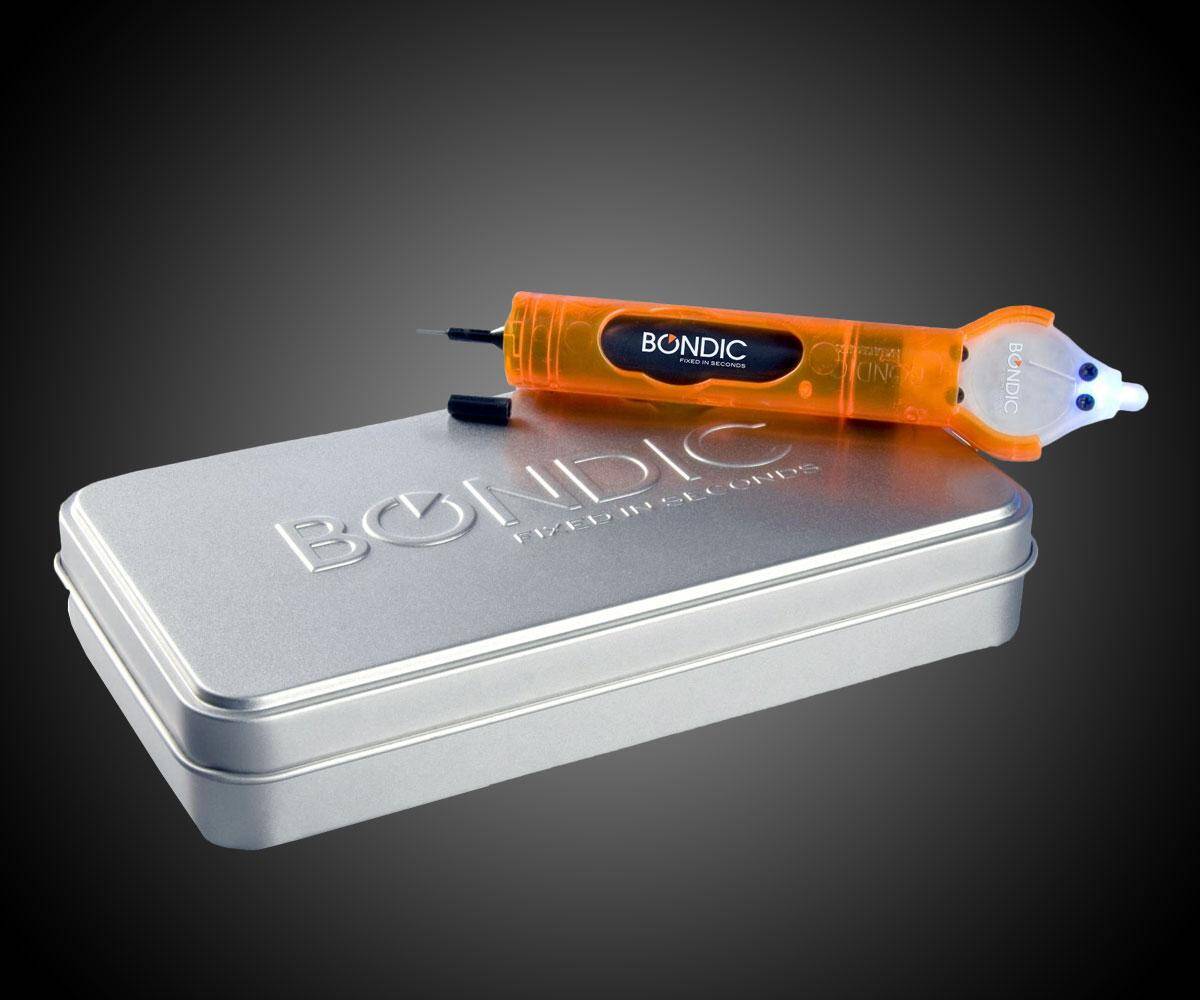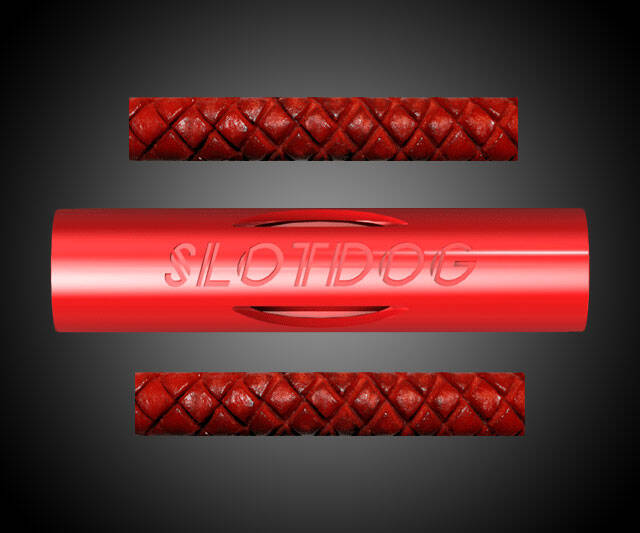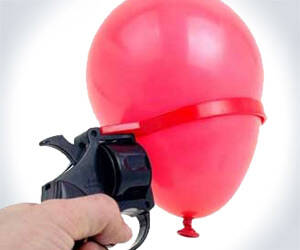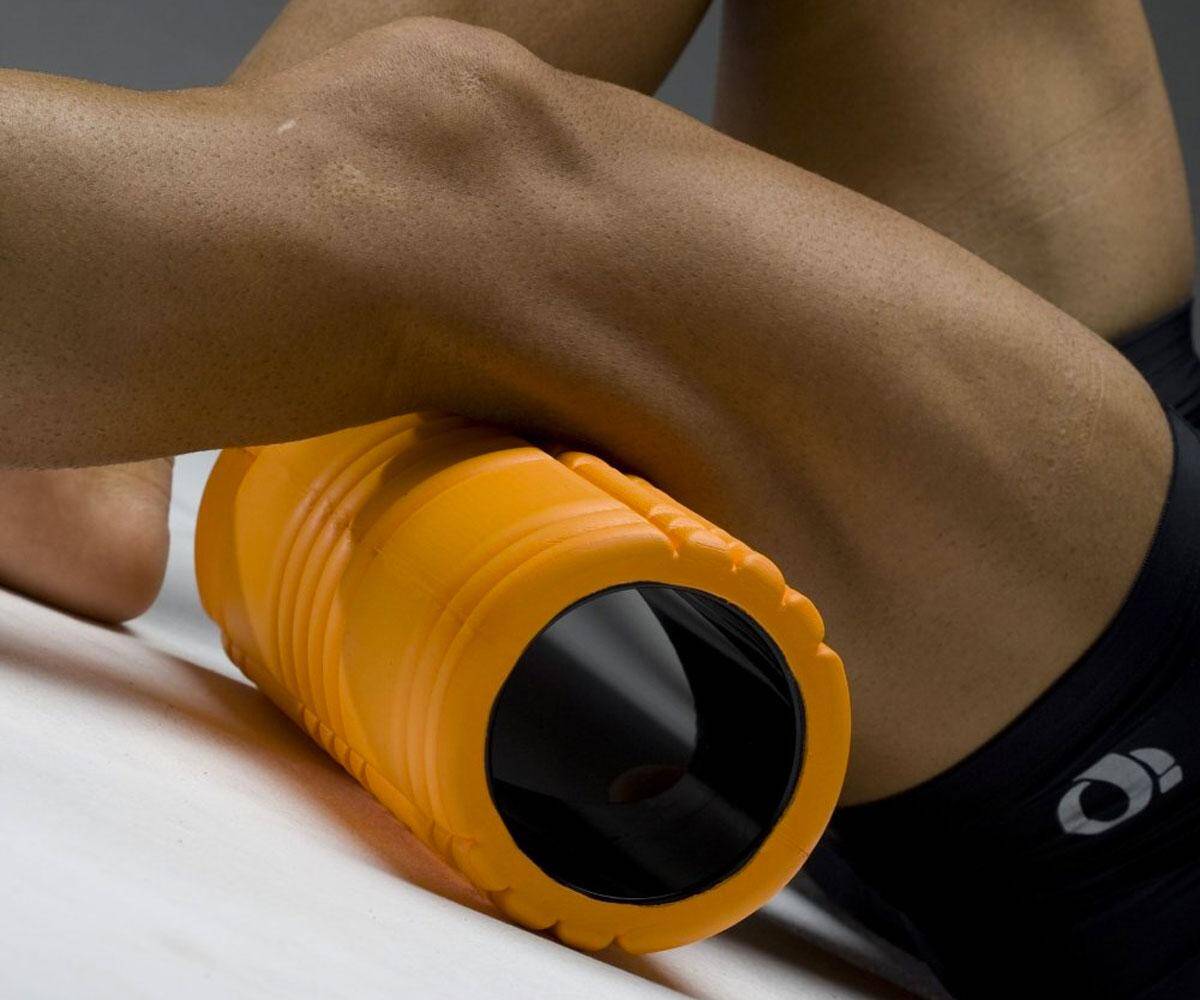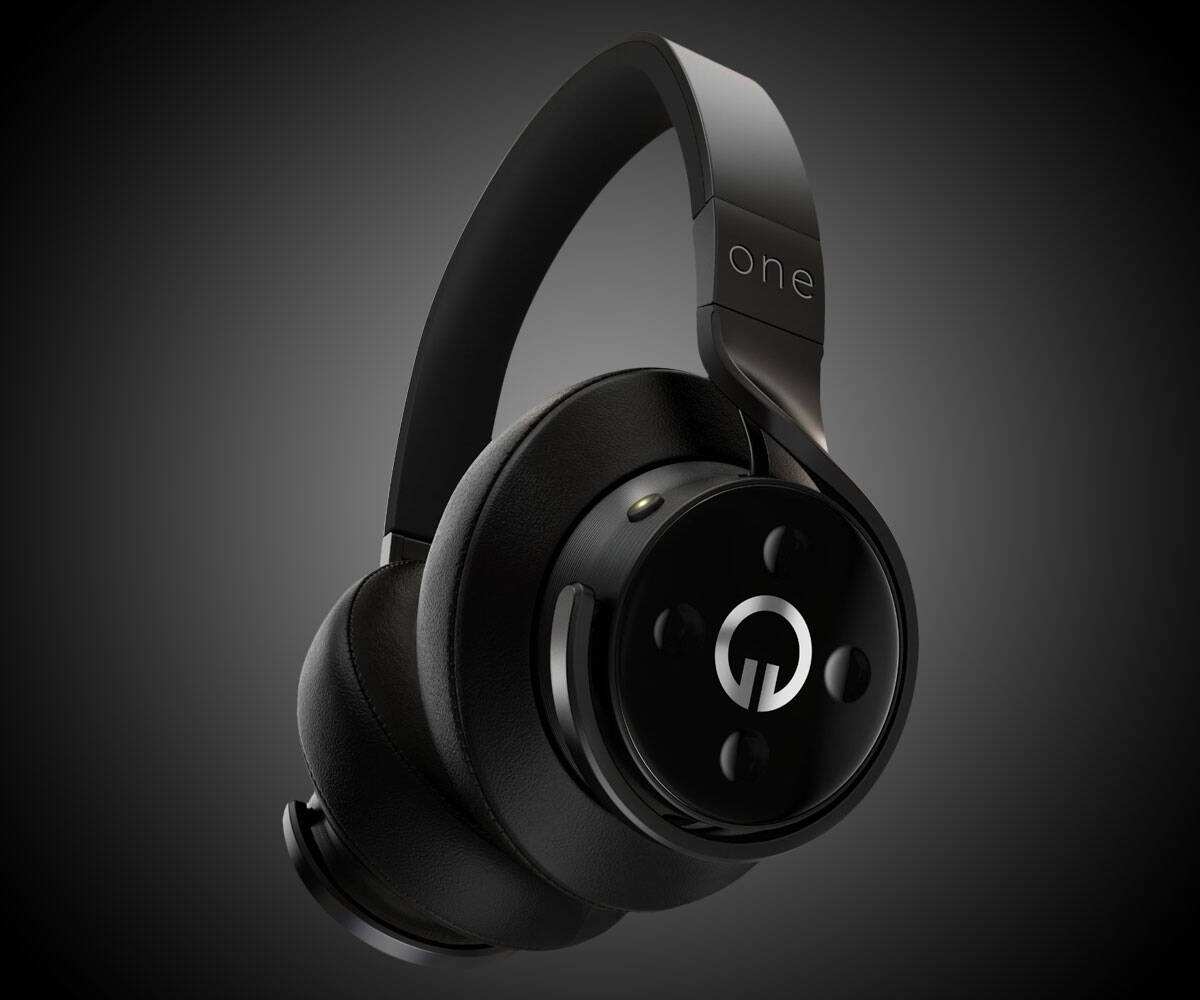Bondic Instant Liquid Plastic Adhesive | ||||||||||
| ||||||||||
Product Description
The Bondic Principles: Bondic works best on rough surfaces and even better with undercuts. Bondic solidifies only by exposure to UV light (LED included) and works best in layers (the maximum thickness of one layer is 1- 1.5 mm). Bondic works best when the surface is clean with no grease. Bondic has no solvents, which is one reason why it doesn't dry out. Bondic is a liquid plastic welder that should be used with the principle of welding and not gluing.
Bondic is the world's first liquid plastic welding tool. It's not a glue, so don't use it as one. It's the ONLY product that works where glue fails and never dries until you want it to. Simply squeeze out the desired amount and use the UV LED Light to cure it in 4 seconds and it's done - the world's fastest drying bond. Bondic is both heat and water resistant, as well as resistant to acids, oils, lyles, and lubricants.
The uses for Bondic are endless: Replace and restore substances (reparation). Setting elements and objects (temporarily or permanently). Control over adhesive strength on different surfaces. Joining objects by integrating undercuts in the construction. Filling and Sealing. Mold Making. Bondic can be molded, milled, filed, painted, polished and sanded, so you can customize any repair. Bondic is lightweight, portable, and can easily fit in your pocket, so you can take it on the go. Bondic fixes the broken pieces of the world, one bond at a time.
DETAILS: Starter Kit Includes: Handheld applicator, LED UV light, and 4 gram tube of liquid adhesive
Features
- BOND ANY MATERIALS IN SECONDS - Our Bondic UV welding glue kit gives you the ability to bond a wide range of materials like plastic, fabric, metal, rubber, and wood. This is great for fixing anything from jewelry, toys and glasses to larger objects like instruments and furniture.
- STAYS LIQUID UNTIL CURED - Unlike traditional glue, Bondic stays liquid until cured by UV light, meaning it will never dry out in the container and there’s no risk of the resin sticking to your skin and clothes. You’ll be able to mold and shape Bondic before setting for a permanent bond, fill or weld - something ordinary glue can never accomplish.
- UNMATCHED DURABILITY - Once cured, Bondic's non-toxic adhesive epoxy is 100% waterproof, heat-resistant, and dries clear. You can even sand and paint over it for a seamless finish.
- ON-THE-GO REPAIR KIT - Bondic's epoxy resin kit includes a tube of UV resin glue, compact UV LED light, and a convenient travel case, making it great for repairs to jewelry, glasses, figurines, phone chargers, and more while on the move.
- COMPLETE STARTER KIT - Includes everything needed to start fixing: handheld applicator, LED UV light, and one 4 gram tube of liquid adhesive all held in a handy metal case
Top Reviews
Works great, but be aware you have to have the bonding exposedby Amazon Customer (5 out of 5 stars)
November 19, 2015
This is great for quick fixes and works better than super glue in many cases. I used these to fix my sunglasses and a piece that fell of my printer tray. In both cases, I was surprised by how quick and easy it is to fix items with this and how strong the bonding is. Be aware that you have to expose the bonding to the light, so this may not be ideal for all fixes. For example, I wanted to fix an emblem that fell off my sunglasses, but if I used this I will need to apply the bonding in a visible area, not behind the emblem as you would with a traditional super glue or adhesive. That being said, the bonding is virtually invisible if applied well.
UPDATE: I love this thing - it has turned me in to Miss Fix-It. Today I used it to seal a tension rod seam to get the rod to hold more weight without falling. This is something I probably would have not even thought of before Bondic. It wouldnt be possible with super glue since it doesnt dry right away. I hate the smell and mess of superglue, and I'm glad I haven't needed to use it since getting Bondic.
This stuff is a joke.
by DIZZYMIZZY (1 out of 5 stars)
September 13, 2016
I bought this to try to fix a broken pair of glasses. I decided to try it first on a pair of over the ear headphones that the plastic housing which holds the ear cup had cracked. The included instructions (such as they are) are poorly worded. My thought is they were translated into English from another language.
The instructions did say to sand both ends to be bonded, then clean them with rubbing alcohol. Did all that. It was recommended to do the repair in thin layers, curing between each layer. Did 4 or 5 thin layers, curing 6-10 seconds between each, although nowhere in the instructions did it say how long you were supposed to cure it.
Initially, the bond appeared to be pretty strong, so I figured it was a success. I put the headphones on the shelf where I keep them, where they sat untouched for 4 full days. Just picked them up to use them, only to find the bond broken back to where it was before I tried to fix it. No one has touched them, so all I can say is the stuff doesn't work as advertised. Now, I'm out $20 for the product plus overnight shipping and am stuck with broken headphones that have the epoxy all over them. No way am I trying this on my glasses. I guess I need to buy new headphones, which is what I should have done instead of wasting almost $30 on this useless junk.
Weak, Very Weak
by Duffer. (1 out of 5 stars)
February 20, 2016
The wind knocked over my Rubbermaid trash container and broke off one of the plastic posts that holds the lid. The broken part is held in place with a plastic cover using two screws. I removed the cover and applied the bonding material to the broken area and then shot it with the LED UV as directed. The plastic post seemed to be attached so I replaced the plastic cover and the two screws. I had the container on its side when I made the repair so now I stood it back right side up. I lifted the lid and that tiny amount of pressure separated the plastic post from the container. Apparently this product is not intended to be used if the repair is faced with even the slightest amount of pressure.
In order to repair my container I drilled a hole through the broken post and attached it to the container with a screw. Works well.
If you have a cat......
by icoyote (5 out of 5 stars)
July 22, 2017
If your cat is plotting to kill you (yes, there's an app for that), then you need this product. Use it to repair the tiny claw holes he put in your washing machine drain hose in an attempt to flood your house and drown you. You may also need it to repair the damage to your cell phone charger when he tries to bite it in half so you can't call for help.
It worked as I had hoped
by John Dye (5 out of 5 stars)
March 3, 2019
I'm doing some Hot Wheels restoration. Now and then parts of a casting are gone and I had no way to repair this. So I came up with a plan. I took apart the car, wrapped the window in plastic nice and tight and put it all back together. Then I simply drew the missing bits with Bondic and hardened it as I went around the car. Then I carefully took the car apart again carefully removed the plastic wrap and I had replaced the missing parts. I still had to make the connections a bit more solid with some gell super glue where plastic meets metal inside the car but once I shoot the repair with some metallic undercoat and repaint the car it will be less noticeable. I might have to do a bit of clean up on the repairs but it's better than having nothing there. Only thing I'd call a minus is the stuff stinks terribly. I think I smelled skunk spray that was more pleasant.
UPDATED: re: Some leakage and the LED was dead
by K. Keydel (4 out of 5 stars)
January 29, 2015
Wow...I'm disappointed. I really needed this thing to work. I was very impressed with the video.
I read some reviews on here regarding fluid leakage from the pen, and I thought it can happen, but maybe their quality-control will step up. I received this unit and it was partially covered with the liquid material that leaked out - not a lot. But it isn't the type of stuff you want on your skin, and there's no way around it unless you open the package with a cloth or paper towel handy. Also, the pen body is much more flexible than I would have thought. It's like a stiff black plastic drinking straw with threads that don't seal that well. Okay, not a big deal.
But the LED wouldn't light. There are two ways of activating it - sliding a switch down that presses one of the LED leads to make contact with the battery, or by squeezing the soft battery case to do the same thing. Nothing. I don't know if the LED is defective or the battery was dead. I suspect the latter.
I had an application for which this item would have been perfect. But I can't use it and have to send it back. Very disappointed.
*****************************************************
********************* UPDATE **************************
*******************************************************
I began my return process with Amazon, but in the meantime, the seller noticed my review and promptly sent a replacement, unsolicited by me. The replacement arrived today and the LED light was fully functional. I didn't notice any leakage around the pen, but I might still expect some, given the material it's made from. The item works as advertised, though I will say that the resulting cured product is a bit more flexible than it appears in the video.
It isn't glue, but if you've had any experience with actual metal welding, you will have more success - you need to make a good solid mechanical connection for good strength.
I updated my review from one to four stars - for the product itself. It isn't the cat's pajamas as it appeared, but it's pretty good.
The seller is outstanding - and I very much appreciate their efforts to satisfy this customer.
Didn't work for me.
by Manny (1 out of 5 stars)
April 26, 2016
Has anybody got this stuff to work. I used it on clear plastic clips that hold blinds and it didn't hold. I used on another plastic part and it easliy came apart. I used it on a clear over the door clothes hook. I gave it a light tug and it came apart. In disgust I gave it to a friend of mine to try it and he used it an a plastic part. He said he got similar results. Thinking maybe if he switched to another brand, maybe he would get better results. He used it and showed me the plastic part he used and said it worked and gave it a slight tug and it came apart. I suspect this stuff is like superglue, etc. and only works on certain plastics.
Maybe not a Panacea, but great stuff none-the-less!
by Matthew K. Wimmer (5 out of 5 stars)
April 27, 2015
Bondic is Great!
Lets start with this statement: Bondic is Great! And then lets get some disclaimers out of the way...
1) Bondic will not replace superglue or epoxy in every situation.
2) It is not as strong as quality epoxy, and as it is not a true adhesive, it will not work well unless there are edges or texture for it to grab -this is why they recommend roughing the surface prior to application-.
3) It is NOT ideal for repairing clean breaks as it is not a true adhesive like super-glue and if it does not have edges and texture to grab onto it will not hold well. Also, if your material is opaque, getting the Bondic in the middle of the crack to cure may prove very difficult, as it has to be hit with Ultraviolet light in order to cure.
4) It still doesn't stick to polypropylene, nothing commercially available really does, but with the right texture it's as good or better than anything else you can buy in the store.
So, what is this Bondic stuff all about?
Bondic is an instant-UV-cure filler material with some adhesive properties. What this means in practice is that Bondic combines the best features of a liquid adhesive like superglue, a paste adhesive like epoxy and a filler like caulk. In it's un-cured state Bondic is a relatively thin, clear liquid that flows easily into tight spaces and forms around odd shapes (like you get in cracks and breaks in splintered plastic), but with just enough viscosity to not run all over the place, it looks and behaves very much like gel-style super glues when first squeezed out. That all changes when you hit it with the Ultraviolet LED, and it (nearly) instantly becomes a durable, clear polymer! you can fill large gaps by building up layers of the stuff, and you can sand and cut the cured material like it were soft plastic, which it essentially is. On materials with a rough, porous surface the bond strength seems quite high, but on smooth non-porous surfaces it will flake off quite readily. you also need to be aware that Bondic won't do a good job of holding your pieces in place until it gets hit with the UV, and you will need to be able to hold your working pieces in place. I've used it to tack some things onto unfinished fiberglass (a rough, and porous material) with excellent results, and have used it in place of electrical tape and heat-shrink tubing to insulate wire junctions, I have fixed a tail-light lens, sealed a leaky wire-passthrough in a "waterproof" speaker, stuck a hanger wire onto a small lamp housing, and more! I haven't tested the claim that it "works underwater" but based on the technology involved it probably does, you just have to be sure all the water has been pushed OUT of your intended joint before you cure.
One caution: Bondic is cured by Ultraviolet light, and if you are working outside on a sunny day you can expect the rays of the sun to begin to cure your project AND cause build-up on the applicator nozzle in a few minutes. Shade your work area if you want to avoid this happening.
Overall Bondic is a very nice addition to my toolbox and junk drawer, and is useful in a wide variety of small repair and construction projects. It's a little expensive, and could be considered a "novelty" as everything it does can be accomplished with other less expensive materials if you are patient, but it really is neat and functional stuff and although you might not wonder "how did I ever live without this?" you'll certainly hope it gets less expensive so you can use it with more abandon.
"Would that it were.."
by palealien (3 out of 5 stars)
April 17, 2015
Real plastic welding, that is.
Straight off the top: magical thinking. I purchased Bondic to try to save time and effort to seal a fuel tank which I had repaired years ago after trying every adhesive available and seeing them all fail. I was pretty sure Bondic would too, but no one had covered it in any depth as far as a range of materials go. It was that type of flexible thermolplastic or PVC which I was fairly certain would resist any technique other than true plastic welding (using a scrap of base material as a filler), which is time consuming and difficult.
I decided to do a video in case a prospective customer wanted to see for him (or her)self without my usual TL/DR written review, but felt the whole story might be interesting as well. In short, I wanted to provide the review I would like to have read before I tried Bondic, and offer other thoughts on the product and its other uses. (I have also discovered, as may you, that reading the reviews here is a great way to learn applications in which Bondic will be more successful And, after completing this review, I thought I might add applications for Bondic that are worthy of note; hang in and later you may see a few surprises.)
So: No, it didn't work for me. And yes, I admit to being disappointed, it's such a cool idea.
But, you have to understand the concept here- Bondic is not an adhesive, or despite claims, provide "welding", it's more like caulk. Or perhaps more accurately, a surface-only patching compound, since the liquid has no adhesive properties until it can be cured by the included UV LED.
Which is good and bad; good in that you won't stick your fingers together or make a permanent mess, but bad because none all but the most perfect of situations can be repaired with any greater results than can be resolved by a traditional product- especially if it's a surface chip or a butt joint. I just tried it on a saucer, and realizing the UV light could not possibly be used to cure the majority of the fluid, I just "burned" the squeeze-out and so far it seems to be an OK, if simply cosmetic repair,
It is always my hope that I will discover the miracle adhesive that bonds that previously un-bondable material- usually a slippery plastic that defies cyanoacrylate or anything at all. When I saw Bondic I was momentarily excited, but as I learned more, age and cynicism kicked in and I realized that while offering the new (to me) technique of UV curing, the fact that Bondic is marketed as "not glue, but actual welding" really increased my suspicions.
I am a welder, and believing in a more realistic definition of what can really be called welding, realized at once there is little about Bondic that could be considered true welding.
A former associate used to refer to the technique used by non-skilled people operating welding equipment which consisted of building up layers of filler material in the hopes some of it would adhere and join the metal as "blobularization". Or, in different words, a cold solder, which is essentially what Bondic offers for a majority of situations. Don't get me wrong; it holds things together, but it's not usually as attractive or as strong as the correct process may be.
The manufacturer is not deceptive about it although a tiny bit vague. The instructions and ad copy describe the Bondic process truthfully, but you just should realize it is not welding. One definition says welding is: "causing two parts of a base material (primarily metal) to become molten under high temperature and fuse, usually with the aid of filler material."
So, I knew it was probably not going to work for the application I needed- re-sealing the leaking center joint of a thermoplastic fuel tank. I had already successfully heat welded the crack once, using a scrap of like material for filler, and it help up well for a few years but I though I would give this new wrinkle a try before a new crack caused a new leak.
Before I tried the real repair, I did a small test on a small section of the tank that was not leaking. I performed used all the prep as recommended, applied the product, cured, waited a few minutes and tested it. While it resisted light pushing and prodding, with a sharp edge under the end of the bead, not to be crude but it simply pulled off like a scab that it essentially was.
Nevertheless, I thought it might be more graphic to shoot a little video, especially for those who do not need this much info- but this time while I made the repair on the actual area. It had to be edited heavily, but be assured I followed both manufacturers' instructions (such as they are) and best procedure for both welding and any plastic repair I have ever performed.
I applied a thin bead along the seam with Bondic, the crack seemed too small for a 3-pass method, and not only using 3 times the material, it would technically be three times more likely to fail. It flowed nicely, ran into the seam and my roughening; looked great.
As seen in the video, I pressurized the tank and put soap on the seam to pinpoint - and illustrate the leak.
But because the compound would not interact with the base material- a resilient thermoplastic- what I ended up with was blobularization. And sadly, the entire lovely bead popped right off with only a little persuasion, it appeared fuel had just been vibrating and resting on the backside was enough to seep under the bead and compromise it. At least I was able to clean it up and re-weld the seam in the original, tedious fashion, and to be fair, I applied another coat of Bondic just for a little more protection- this is the part of the machine that rests on the ground (hence the original failure) so it may well protect the seam a little longer. .
I suspect if one were able to completely surround a crack or a hole as illustrated by Bondic's use of a copper pipe repair (gotta test that one) a measure of success could be expected, but this is usually not a convenient or realistic approach to a repair, except perhaps for temporary emergencies.
I found several plastics that didn't need repair in the first place would accept a bead that could not be removed, but am still awaiting for the ideal test piece.
I know this kit will be a welcome addition and a lifesaver at some point, it is unique and the ease of use offsets quite a few other limitations, but it is not the magic bullet.
It's an attractively designed little package, right down to the foam-lined tin storage case, the way the LED case snaps into the dispenser pen.. but that alone was a warning. Ever seen a cleverly packaged repair product that was in common use and worked really well? I haven't.
And BTW, be sure you don't accidentally expose the needle-tip applicator to the LED. It pulls out and can be cleaned, as long as you have a #75 drill bit handy!
-------------
I recently relocated some blinds that were mounted with stout brackets into the drywall, not only did I not have any patching compound to fill the holes, even if I had I was in a really big hurry. So I happened to think of Bondic- now, here's one app you won't see advertised! But after cleaning up the surface ever so slightly, I was able to work a drop or two into each hole, cure and paint immediately. In most cases one or two passes were all it took. I was able to massage the liquid a bit to match the texture, the fill is solid and after painting, almost undetectable. I had pretty much given up on re-ordering, but stuff like this shows it might not be a bad idea to leave some around for the unexpected.
More from the understaffed and ill-equipped Bondic Volunteer Research Lab: I have a pair of Ray-Bans that have been repaired so many times the bottom frame of one side is almost completely missing. So much so the bottom edge of lens would sit on my nose. Fearlessly reaching once again for the remaining Bondic, I made a bead at each end of the old frame, then slowly built it up across the gap.
It blended and fused perfectly, and the shades are now wearable once again. The bead was of course clear plastic, so a little touch-up with a black Sharpie and I am good to go. At this point the product reminds me of its homophonic automotive world counterpart, "Bondo".
Bottom line is that I'm out $20.00. This is a flop.
by SuperD (1 out of 5 stars)
January 23, 2016
Bottom line is that I'm out $20.00. This is a flop. It actually does not work as well as glue. If you want to join something back together, you have to build up the material all around the join area. You'll see a lump of material. Therefore, the repair has to be in a place where you don't care that the material is built up and visible. There's far too little material supplied. Refills are far too expensive. Later, I found there's a nearly identical product on the market for half the price. Refills with that product are also half the price. I only ended up fixing one thing successfully, and I could have replaced that item with a new item for $15.00. No cost savings. By the way, I don't believe for a second that this material is 100% non toxic as advertised; it is obviously a synthetic polymer like any other synthetic polymer. Smell it and you'll see. If the company wants to assert that it is non-toxic, then they should state exactly what the chemical is. I'd then review the Material Safety Data Sheet on that chemical. What it may be is the kind of material used in 3D liquid printer prototyping. If you paid this much for the liquid goop to do your 3D modeling, you'd be bankrupt after your first few models. So this is a near total loss for me. I would never consider buying this product again. It's not worth it in the slightest sense.
Weak, Very Weak
by Duffer.,Top Contributor: Cooking (1 out of 5 stars)
February 20, 2016
The wind knocked over my Rubbermaid trash container and broke off one of the plastic posts that holds the lid. The broken part is held in place with a plastic cover using two screws. I removed the cover and applied the bonding material to the broken area and then shot it with the LED UV as directed. The plastic post seemed to be attached so I replaced the plastic cover and the two screws. I had the container on its side when I made the repair so now I stood it back right side up. I lifted the lid and that tiny amount of pressure separated the plastic post from the container. Apparently this product is not intended to be used if the repair is faced with even the slightest amount of pressure.
In order to repair my container I drilled a hole through the broken post and attached it to the container with a screw. Works well.
This stuff is a joke.
by DIZZYMIZZY,Top Contributor: Pets (1 out of 5 stars)
September 13, 2016
I bought this to try to fix a broken pair of glasses. I decided to try it first on a pair of over the ear headphones that the plastic housing which holds the ear cup had cracked. The included instructions (such as they are) are poorly worded. My thought is they were translated into English from another language.
The instructions did say to sand both ends to be bonded, then clean them with rubbing alcohol. Did all that. It was recommended to do the repair in thin layers, curing between each layer. Did 4 or 5 thin layers, curing 6-10 seconds between each, although nowhere in the instructions did it say how long you were supposed to cure it.
Initially, the bond appeared to be pretty strong, so I figured it was a success. I put the headphones on the shelf where I keep them, where they sat untouched for 4 full days. Just picked them up to use them, only to find the bond broken back to where it was before I tried to fix it. No one has touched them, so all I can say is the stuff doesn't work as advertised. Now, I'm out $20 for the product plus overnight shipping and am stuck with broken headphones that have the epoxy all over them. No way am I trying this on my glasses. I guess I need to buy new headphones, which is what I should have done instead of wasting almost $30 on this useless junk.
Customers Who Bought This Item Also Bought
- Bondic, 4 Gram Replacement Cartridge Refill For Starter Ki
- Bondic LED UV Liquid Plastic Welding Starter Kit
- Bondic Refill 4 Gram Liquid Plastic Cartridge UV Adhesive Glue (Pack of 2)
- Bondic Refill 4 Gram Liquid Plastic Cartridge UV Adhesive Glue (Pack of 5)
- Milescraft 1312 DrillBlock- Handheld Drill Guide
*If this is not the "Bondic Instant Liquid Plastic Adhesive" product you were looking for, you can check the other results by clicking this link

